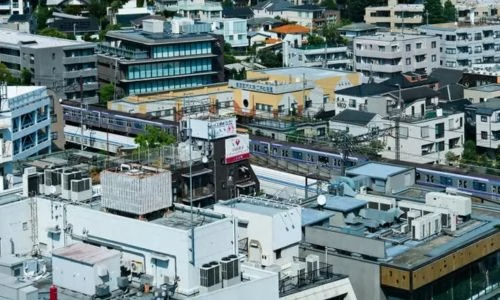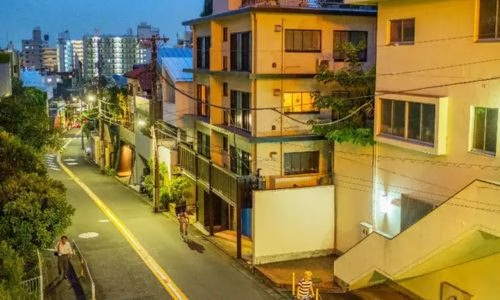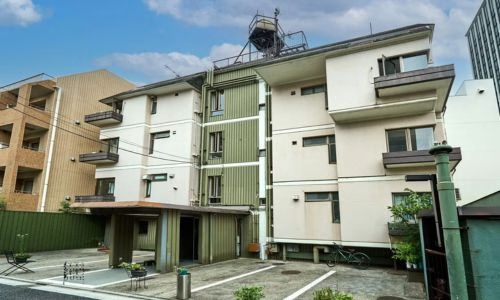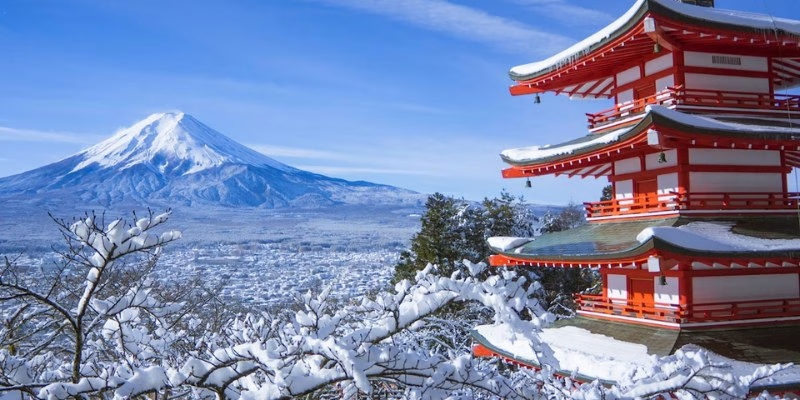As one of the most dynamic cities in the world, Tokyo continues to attract professionals, investors, and expats looking to enjoy the benefits of urban living. In particular, demand for apartments in central Tokyo remains strong thanks to its unmatched convenience, transportation access, and international appeal. But how much does it really cost to live there, and what types of apartments are available? This article breaks down what you need to know if you’re planning to rent or buy an apartment in the heart of Tokyo.
Why Central Tokyo Remains a Top Choice
Choosing an apartment in central Tokyo means more than just a great address, it offers a highly practical and rewarding lifestyle. Neighborhoods like Minato, Chiyoda, Shinjuku, and Chuo are known for their strong infrastructure, international presence, and daily convenience.
Thanks to excellent train coverage from the JR Yamanote Line and Tokyo Metro, commuting from central areas is smooth and time-saving. Whether you’re heading to the office, shopping in Ginza, or catching a bullet train, the city is at your doorstep.
With upscale dining, bilingual services, green spaces, and quick access to schools and hospitals, living in central Tokyo appeals to both professionals and families. While the average income in Tokyo tends to be higher than in other regions, smart budgeting still matters, especially if you’re comparing options to rent an apartment in Tokyo or explore an apartment for sale in Tokyo for long-term stability.
From lifestyle to location, central Tokyo continues to be one of the most desirable places to live in the capital.

Urban living in central Tokyo
Central Tokyo’s Apartment Landscape
Central Tokyo’s real estate market offers a diverse selection of apartment layouts tailored to different lifestyles and budgets. Whether you’re living alone, with a partner, or as a family, there are plenty of options to consider:
- Studio units (1R or 1K) are compact and efficient, perfect for singles, students, or young professionals looking for simplicity and affordability.
- 1LDK and 2LDK apartments provide more space, with separate areas for sleeping, dining, and working. These are well-suited for couples, remote workers, or individuals who value room to relax.
- 3LDK and larger layouts are ideal for families or those sharing a home, often found in modern residential towers with added space and comfort.
- Serviced apartments come fully furnished and include housekeeping, these are a popular choice among expats on short-term assignments or business travelers seeking flexibility.
Most Tokyo apartments in central areas come with standard amenities such as auto-lock entry systems, elevators, and parcel delivery boxes. In newer buildings, you may also find on-site fitness rooms, lounges, or dedicated garbage collection areas, all designed to enhance comfort and convenience in a fast-paced urban environment.
How Much Does It Cost to Rent or Buy in Central Tokyo?
Living in the heart of Tokyo comes with both premium convenience and a higher price tag. Whether you’re planning to rent for the short term or thinking about long-term ownership, understanding the market landscape is essential. Central Tokyo’s real estate prices reflect the area’s desirability, connectivity, and quality of life. From compact studio rentals to upscale condominiums, the range of available properties suits many different needs, but budget planning is key.
Renting in Central Tokyo
Rental rates in central Tokyo can differ significantly depending on factors such as unit size, distance to the nearest station, building condition, and included amenities. For those looking to rent an apartment in central Tokyo, here are some typical price ranges:
- 1K or studio units generally cost between ¥100,000 and ¥150,000 per month, ideal for singles or students who prioritize location over space.
- 1LDK apartments, which offer a separate living and dining area, often fall within the ¥160,000 to ¥250,000 range. These are popular among professionals and couples.
- 2LDK units or larger, typically rented by families or shared households, start from ¥250,000 per month and can rise sharply depending on the building’s age and amenities.
In addition to rent, tenants should also factor in monthly utility charges, building management fees, and one-time move-in expenses, such as a security deposit, key money, and possibly agency fees. These can total two to four months’ worth of rent upfront.
Navigating Property Ownership in Central Tokyo
For those planning to settle down or invest long-term, buying a Tokyo apartment can offer greater stability and potential savings over time. Property prices in central areas are influenced by proximity to major business zones, building age, and floor level.
- Entry-level properties, often in older buildings or smaller units, start around ¥30 million, offering a more accessible entry point for buyers.
- Modern condominiums in high-rise towers, especially in sought-after neighborhoods like Minato or Chiyoda, typically range from ¥50 million to over ¥80 million.
Although purchasing a home involves higher initial costs, Japan’s relatively low mortgage interest rates and long-term equity potential make ownership appealing, especially for residents planning to stay over five years. In central districts, where demand remains consistently high and land is limited, owning property is often viewed as a secure financial move.
Is It Affordable Based on Your Income?
Understanding how your income compares to rental costs in Tokyo can help you plan more realistically. In the capital, the average monthly salary typically falls between ¥400,000 and ¥450,000, allowing many professionals to comfortably rent a 1LDK apartment in central districts.
On the other hand, individuals earning closer to Japan’s minimum wage, roughly ¥170,000 to ¥200,000 per month, may find it more practical to explore studio units, older properties, or areas slightly beyond the city center, where rents are generally more affordable.
Those with higher or combined household incomes, such as dual-income couples, foreign professionals in sectors like tech or finance, or entrepreneurs, often have greater flexibility. They’re more likely to afford newer apartments, larger layouts, or homes in high-demand neighborhoods like Minato or Chiyoda, where convenience and quality of life come at a premium.

Plan Tokyo rent by salar
Best Areas to Rent or Buy in Central Tokyo
Central Tokyo is made up of several distinct districts, each offering a unique living experience. Whether you’re looking for cultural richness, business proximity, or a quieter residential feel, there’s a neighborhood to match your lifestyle.
- Minato-ku: A favorite among expats and professionals, Minato is known for its international vibe, modern buildings, and strong transport links. Areas like Roppongi, Akasaka, and Azabu-Juban offer upscale apartments, embassies, and easy access to business centers.
- Chiyoda-ku: As Tokyo’s administrative core, Chiyoda blends prestige with serenity. It’s home to the Imperial Palace, government institutions, and a number of luxury high-rise residences tucked into quieter pockets like Kojimachi and Ichigaya.
- Shinjuku-ku: Bustling and dynamic, Shinjuku is ideal for those who enjoy vibrant nightlife, endless dining options, and unbeatable rail access. It also offers a broader range of rental prices, from studio apartments to family-sized units.
- Chuo-ku: Combining history and commerce, Chuo includes neighborhoods like Ginza and Nihonbashi, where tradition meets modern convenience. Residents enjoy high-end shopping, proximity to office towers, and refined city living.
- Bunkyo-ku: More residential in feel, Bunkyo is popular with families and academics. It’s home to Tokyo Dome, top-ranked universities, and a quieter atmosphere compared to its busier neighbors.
Each area offers its own mix of benefits, some prioritize easy commuting, others emphasize community or prestige. When searching for an apartment in central Tokyo, the best choice often depends on your daily routine, housing needs, and long-term goals.
Should You Rent or Buy in Central Tokyo?
Deciding between renting and buying an apartment in central Tokyo ultimately comes down to your timeline, goals, and financial situation. Each option has its own benefits depending on how long you plan to stay in Japan and what level of commitment you’re ready to make.
Renting
For those who are new to the country, relocating for work, or unsure about long-term plans, renting is often the more practical choice. It provides flexibility and allows you to adjust easily if your job, lifestyle, or housing needs change.
Key advantages of renting:
- Quick move-in process, often within a few weeks
- Requires less initial spending than buying a property
- Ideal for short- to mid-term stays (under 5 years)
- Easier to relocate if needed
Buying
If you intend to live in Tokyo for the foreseeable future or are exploring property as an investment, purchasing an apartment can be a smart move. Especially with historically low mortgage interest rates in Japan, buying can offer both personal security and long-term financial benefits.
Reasons to consider buying:
- More cost-effective over time, particularly for long-term residents
- Unrestricted ownership with long-term stability
- Ability to accumulate equity while profiting from tenants
- A worthwhile option if staying 5 years or more
Whether you choose to rent or buy, understanding your long-term outlook will help you make the right move in Tokyo’s competitive housing market. If you’re still unsure, speaking with a real estate advisor who understands both rental and sales options, like the team at Arealty, can offer helpful clarity.
Renting or Buying as a Foreigner: What to Know
Yes, foreign nationals can legally rent or purchase property in Tokyo, including in central districts like Minato, Chiyoda, or Shinjuku. While the process is straightforward in most cases, there are a few extra requirements to be aware of, especially for newcomers. For renting, most landlords typically ask for the following:
- A valid residence card
- Verification of steady earnings or job status
- A guarantor, or alternatively, the use of a guarantor company (which may involve additional fees)
Although renting in Tokyo has become more accessible for foreigners, some landlords may still prefer tenants with long-term visas or full-time employment. To avoid misunderstandings, it’s best to work with a bilingual real estate agency that regularly supports international clients.
When it comes to buying an apartment in Tokyo, Japan does not place restrictions on foreign ownership, you can fully own residential property even without permanent residency. However, expect a more document-heavy process compared to local buyers. You may be asked to show proof of funds, identification, and tax documentation depending on the property type and financing method.
Partnering with a real estate agency like Arealty, which specializes in guiding overseas buyers and renters, can simplify the entire experience, from viewing listings to finalizing contracts, ensuring nothing gets lost in translation.
Conclusion
Whether you’re seeking a compact rental or planning to invest in a high-rise, central Tokyo combines lifestyle, convenience, and long-term value. With a stable real estate market and transparent regulations, even foreign residents can navigate the process with ease. Thanks to expert support from agencies like Arealty, finding the right apartment, whether for living or investment, is more accessible than ever.






Leave a Reply